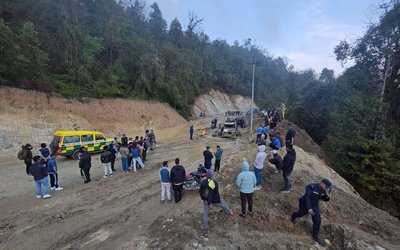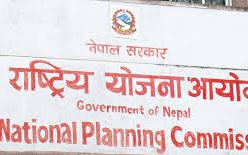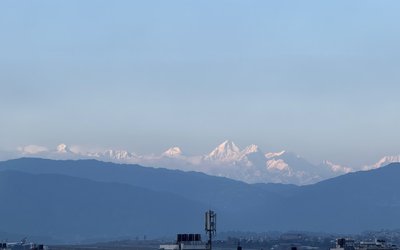
Makar Sankranti is one of the most significant days in the Hindu calendar celebrating the movement of the Sun from Dakshinayan (Southern Hemisphere) to Uttarayana (Northern Hemisphere). The transition of the Sun or Uttarayana, when days get longer and the winter season starts ebbing, signals the start of the harvest season in Nepal and India.
Today is also a special day of Tharu community in Nepal. Day celebrates the day as Maghi and the government announces national holiday on the occasion.
The auspicious festival of Makar Sankranti, celebrated in January every year, marks the first day of the sun’s transition into the sun sign Capricorn or Makara in Hindi. The festival is dedicated to the Sun God. This year, it will be celebrated on January 14, 2021.
According to Panchang, “The time between Makar Sankranti and 40 Ghatis (roughly 16 hours for Indian locations if we consider 1 Ghati duration as 24 minutes) from the time of Makar Sankranti is considered good for auspicious work. This duration of forty Ghatis is known as Punya Kaal. Sankranti activities, like taking bath, offering Naivedhya (food offered to the deity) to Lord Surya, offering charity or Dakshina, performing Shraddha rituals and breaking fast or Parana, should be done during Punya Kaal. If Makar Sankranti happens after sunset then all Punya Kaal activities are postponed till the next sunrise. Hence, all Punya Kaal activities should be done during the day time.”
History and importance
The festival, which marks the onset of summer and the six-month-long auspicious period for Hindus known as Uttaarayan, is observed according to the solar cycles. The festival is celebrated as Sukarat in Central India, Bihu in Assam, Pongal in Tamil Nadu and Makar Sankranti in Bengal, Bihar, Odisha and the neighbouring regions.
On the day of Makar Sankranti, various spiritual practices are observed. It is common for people to take a holy dip in rivers like Baraha Chhetra Debghat, Ridi in Nepal, Kaveri and Ganga in India, and it is generally believed that doing so would absolve them of their past sins. However, owing to the pandemic, restrictions are expected to be observed in many parts of the country.
Thousands of devotees from across Nepal and India came to celebrate the Magha Mela at Devghat in Chitwan, Barahachhetra in Kosi and other rivers across Nepal including Bagmati River in Pashupati.
Tharu Community has been celebrating across Nepal as a New Year or Maghi. Praying to the sun and the use of black sesame (til), Chaku (Raw sugar), Tarul (Root) Palungo (spinach) and Ghiu (Butter) are also integral parts of the festival in Kathmandu valley. People make Tilko laddu, Ghiu (butter), Chaku and Tarul (Root) in other parts of Nepal. A number of fairs take place in different places across Nepal and India to celebrate Makar Sankranti.
In southern Nepal, it is called Sakraat or Khichdi as well. Delicacies that are made during this festival include chura, jaggery, sesame seeds, tilwa etc. People start their day by worshipping and putting sesame seeds into fire, followed by dahi chura, which is served with curd and red pumpkin. Green Canteen Raw Handmade Sugarcane Jaggery Vegan and Gluten
Makar Sankranti is the date from which the Northward movement of the sun begins. The period from Karka Sankranti to Makar Sankranti is known as the Dakshinayan.
Known as Magey Sakrati, it is also associated with the worship of Lord Shiva.Makar Sankranti is celebrated on a fixed date that is 14 January every year. It also marks the termination of the winter season and the beginning of a new harvest season.
It is dedicated to Lord Sun. It also refers to a specific solar day in the Hindu calendar. On this auspicious day, the sun enters the zodiac sign of Capricorn or Makar which marks the end of winter month and the start of longer days. This is the beginning of the month of Magh.
To recompense for the distinction that happens due to the revolution around the sun, every 80 years the day of Sankranti is deferred by one day. From the day of Makar Sankranti, the sun begins its northward journey or Uttarayan journey. Therefore, this festival is also known as Uttarayan.
Sankranti is deemed a Deity. As per the legend, Sankranti killed a devil named Sankarasur. The day next to Makar Sankrant is called Karidin or Kinkrant. On this day, Devi slayed the devil Kinkarasur.
An ancient festival that is observed according to solar cycles, Makar Sankranti is one of the biggest celebrations in Nepal. Dedicated to the sun god Surya, the festival sees devotees take a holy dip in rivers, which is believed to absolve them of past sins.
People also pray to the sun and thank for their successes and prosperity. Not only that, people celebrate the occasion with sweets made of jaggery and sesame as well as rice, along with sumptuous meals.
- Nepal Electricity Authority cancels contract worth over Rs 1 billion, now electricity wires going to customers' homes are bare
- Apr 21, 2025
- Four people died in Taplejung after their vehicle caught fire after getting entangled in a live wire
- Apr 21, 2025
- RPP General Secretary Rana released on bail
- Apr 21, 2025
- Nepal requires Rs 21.165 trillion to implement SDGs goals
- Apr 21, 2025
- Putin's unilateral 'Easter ceasefire' ends, Ukraine suggests partial truce
- Apr 21, 2025















